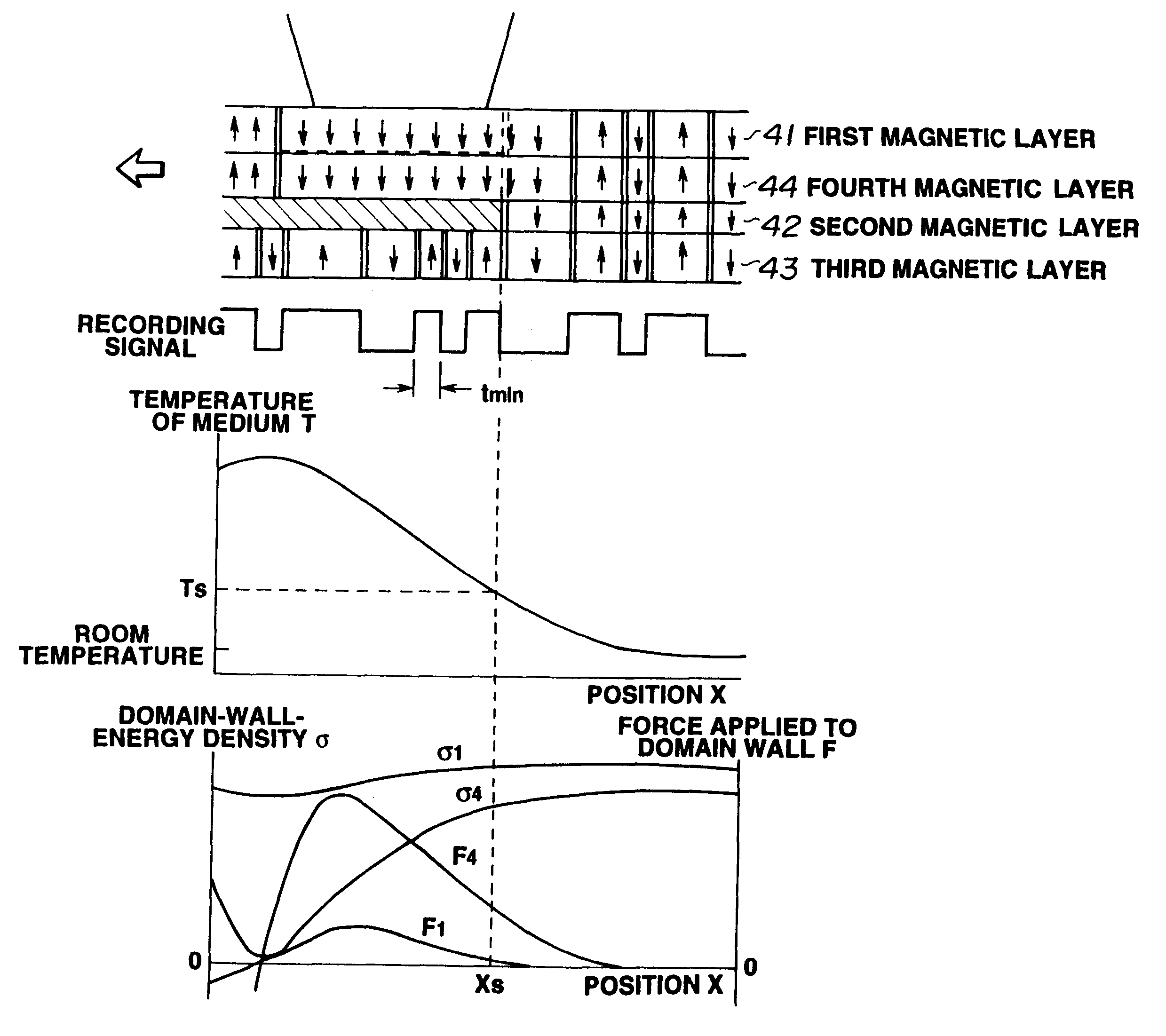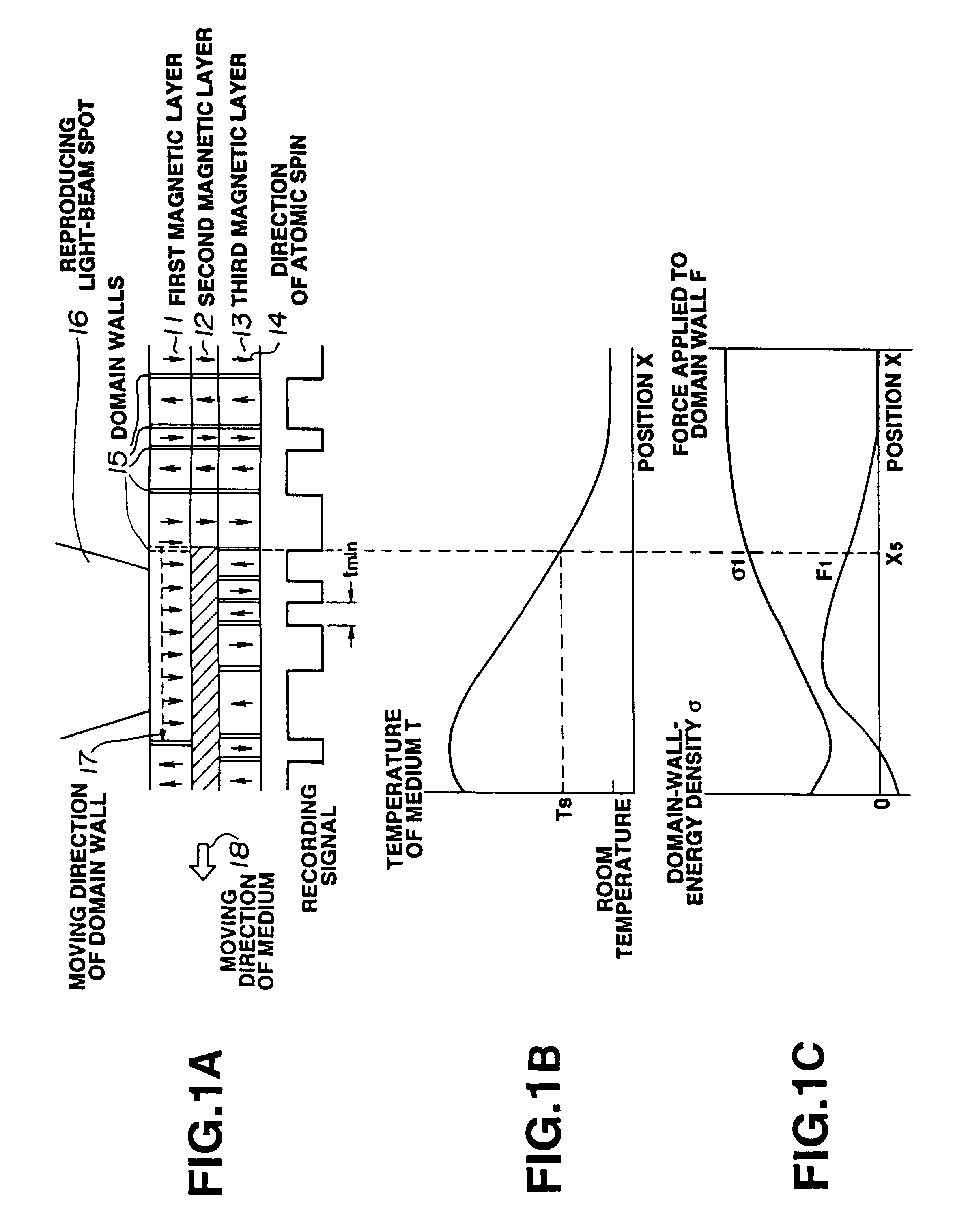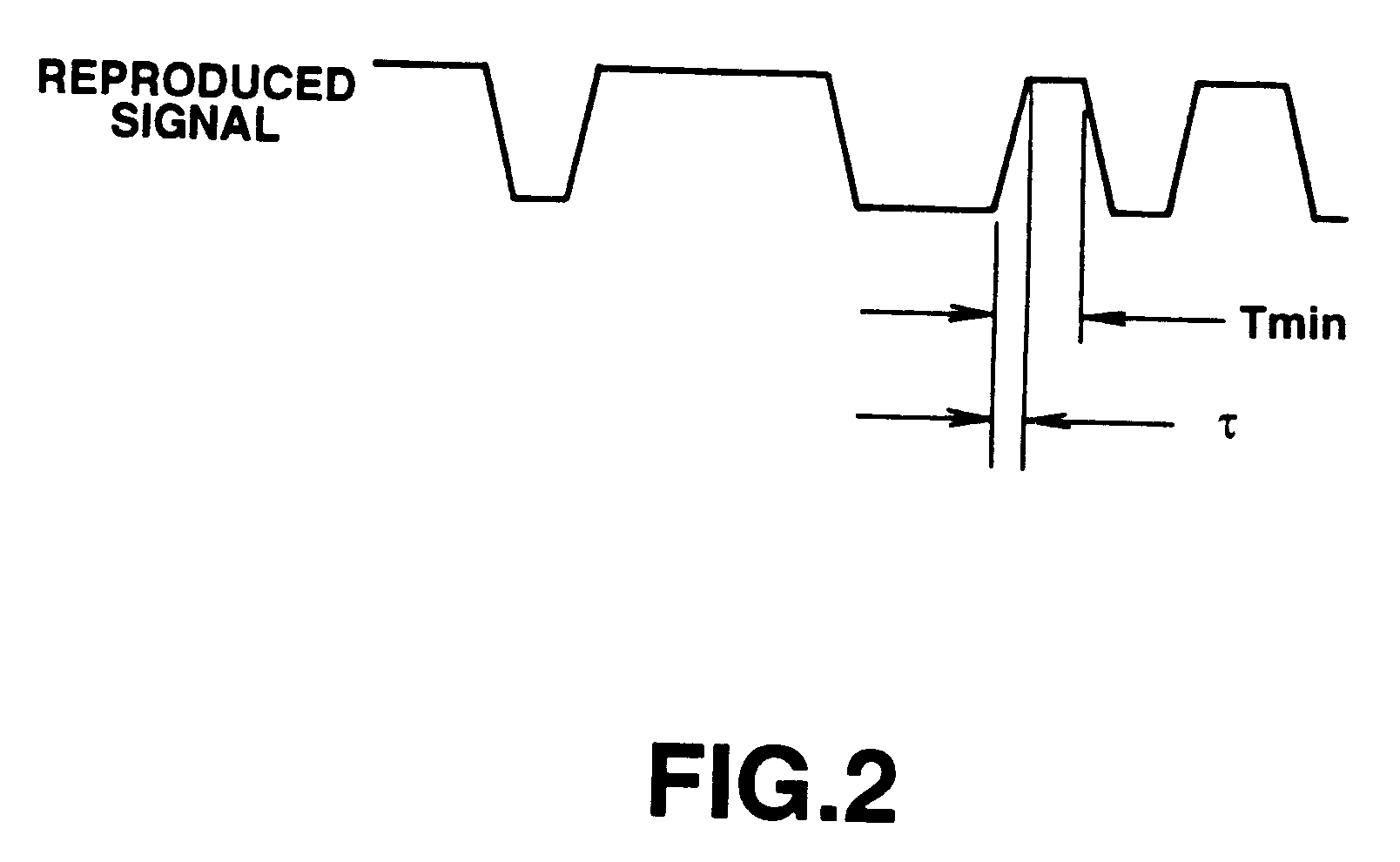Magnetooptical recording medium on which high-density information can be recorded and method of reproducing the recorded information
a recording medium and high-density technology, applied in the field of magnetooptical recording medium, can solve the problems of reducing the amplitude of the reproduced signal, the inability to obtain sufficient reproduced signal, and the limitation of the wavelength of the laser beam and the numerical aperture of the objective lens
- Summary
- Abstract
- Description
- Claims
- Application Information
AI Technical Summary
Benefits of technology
Problems solved by technology
Method used
Image
Examples
experimental example 2
Each magnetooptical recording medium was prepared by forming thin films on a polycarbonate substrate using the same apparatus and method for forming films as in the case of the first experimental example. However, the forming method and the structure of the obtained medium were changed in the following three items.
First, an accelerated irradiation processing using Ar ions was performed for the surface of the substrate before forming the films. Second, an accelerated irradiation processing using Ar ions was performed for the surface of the film after forming the SiN layer, serving as the interference layer. The surface of the obtained medium was smoothed by the above-described processing. Thirdly, the thickness of the first magnetic layer was changed to 2000 angstroms. These changed items independently contribute to improvement in the mobility of domain walls of the first magnetic layer.
Recording / reproducing characteristics of the above-described medium was measured by the same metho...
experimental example 3
Each magnetooptical recording medium was prepared by forming thin films on a polycarbonate substrate using the same apparatus and method for forming films as in the case of the first experimental example.
In the present experimental example, however, prepits are formed on the substrate, and the cross section of the guide grooves has a U-like shape. Accordingly, the laminated magnetic layer is not separated at the guide groove portions.
A high-power laser beam was projected onto the guide groove portions to anneal the entire magnetic layer at the guide groove portions. As a result, the property of the magnetic layer at the guide groove portions changed to become a in-plane-magnetizing film, and the coupling between the magnetic layers on adjacent tracks was disconnected. Recording / reproducing characteristics of this medium were measured in the same manner as in the case of the first experimental example, and excellent results as in the case of the first experimental example were obtain...
experimental example 4
Recording / reproducing characteristics of the medium of the first experimental example were evaluated using substantially the same recording / reproducing apparatus as that used for the first experimental example.
In this experimental example, however, the positional relationship between the recording / reproducing spot and the heating spot was changed as shown in FIG. 11A. That is, the recording / reproducing spot was arranged to be projected onto a portion corresponding to the slope in a front portion in the moving direction of the medium in the temperature distribution provided by the heating laser spot.
When the medium has moved and passed through the position S shown in FIG. 11A, the first magnetic layer and the third magnetic layer are coupled again, so that the oriented magnetized state of the third magnetic layer is transferred onto the first magnetic layer. When a domain wall in the third magnetic layer has passed through the position S, a domain wall is left at the position S in th...
PUM
| Property | Measurement | Unit |
|---|---|---|
| Curie temperature | aaaaa | aaaaa |
| pressure | aaaaa | aaaaa |
| Curie temperatures | aaaaa | aaaaa |
Abstract
Description
Claims
Application Information
 Login to View More
Login to View More - R&D
- Intellectual Property
- Life Sciences
- Materials
- Tech Scout
- Unparalleled Data Quality
- Higher Quality Content
- 60% Fewer Hallucinations
Browse by: Latest US Patents, China's latest patents, Technical Efficacy Thesaurus, Application Domain, Technology Topic, Popular Technical Reports.
© 2025 PatSnap. All rights reserved.Legal|Privacy policy|Modern Slavery Act Transparency Statement|Sitemap|About US| Contact US: help@patsnap.com



